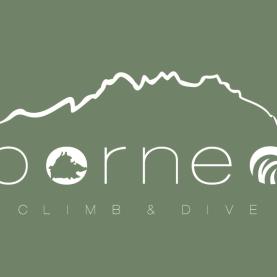 written by Borneo Climb Dive
written by Borneo Climb Dive
Many diving institutions exist. To name a few - PADI, SSI, TDI, NAUI. Whichever qualification you decide to gain, they are all just brands to help you take your very first step to explore the wonderful marine life. All diving institutions basically teach the same methods in scuba diving. One of the basic qualifications available is the Open Water Course. This qualification gives you your license to dive anywhere in the world, whether it be in the shallow waters at 5 meters such as where divers do macro diving off the island of Mabul, a popular dive spot near world famous Sipadan Island, or at depths of 18 meters. Either way, a buddy system is a must, whereby divers are required to dive in pairs. This is one of the safety measures; an international standard, which can save lives.
In general, the Open Water Course involves three steps. It starts off with learning the theory of scuba diving, followed by training in shallow waters (which may be in a swimming pool or a shallow section off a beach). The final and most exciting step for learners is when they head out to the open water where everything is unexpected. There, new divers will get to explore the underwater world of colorful aquatic life, deep sea pinnacles and even sunken ship-wrecks. Having this qualification gives people the opportunity to explore a world which is not normal human territory.
One of the most popular diving certifications is with PADI. Alongside other dive institutions, dive lessons are provided in a way. Learning how to dive is not just about gaining a certification; in the process, one has a lot of fun. For some, learning how to dive is the first step to a new career. There have been many who have, due to sheer passion, gone on to much higher levels of qualifications. With deeper and stronger knowledge and experience, one is able to work underwater in a professional manner – becoming an instructor themselves, or becoming involved in commercial diving.
So whether it is out of personal interest in the wonders of breathing underwater, or as a move towards a new career path, is it important to follow proper procedures. There are casualties, most of which boil down to human error.
This is a normal path to gaining an Open Water Course.
Day 1. Theoretical Knowledge
Knowledge development refers to learning about the basic principles and procedures in scuba diving. This is crucial; this understanding of aspects such as the effects of pressure on ones’ body prepares a new diver to manage behaviour underwater.
Day 2. Confined Water Dives
At this stage, learners get their first experience with using SCUBA equipment. Basic skills, such as the setting up of gear and removing water from the mask underwater, gives one the confidence needed to manoeuvre oneself underwater.
Day 3. Open Water Dives
Last, but definitely not least, are the dives in open sea. With all the theory learned and practice dives, one is now ready to fully experience what it is like to be a scuba diver.

Load more comments